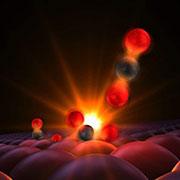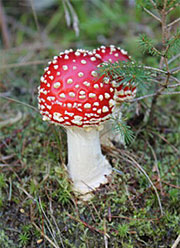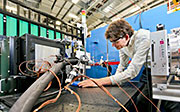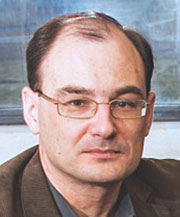-
 Scientists have used an X-ray laser at the DOE’s SLAC National Accelerator Laboratory to get the first glimpse of the transition state where two atoms begin to form a weak bond on the way to becoming a molecule.
Scientists have used an X-ray laser at the DOE’s SLAC National Accelerator Laboratory to get the first glimpse of the transition state where two atoms begin to form a weak bond on the way to becoming a molecule.
This fundamental advance, reported recently in Science Express and long thought impossible, will have a profound impact on the understanding of how chemical reactions take place and on efforts to design reactions that generate energy, create new products and fertilize crops more efficiently.
“This is the very core of all chemistry. It’s what we consider a Holy Grail, because it controls chemical reactivity,” said Anders Nilsson, a professor at the SLAC/Stanford SUNCAT Center for Interface Science and Catalysis and at Stockholm University who led the research. “But because so few molecules inhabit this transition state at any given moment, no one thought we’d ever be able to see it.”
Full Story
-
 Ubiquitous carbon-rich aerosol particles created by emissions from cars, trees, and other sources alter our climate and affect air quality. Until recently, the properties of these aerosols were hard to experimentally characterize, forcing computational models to rely on unsupported assumptions. For several years, scientists at DOE's Pacific Northwest National Laboratory have chipped away at these notions. They have provided hard data about viscosity, shape, morphology, volatility, and other fundamental particle properties. Recently, the team tackled how the particles, called secondary organic aerosol particles (SOA), evaporate when the relative humidity is high. They found that these aerosols actually evaporate very slowly, sticking around for days.
Ubiquitous carbon-rich aerosol particles created by emissions from cars, trees, and other sources alter our climate and affect air quality. Until recently, the properties of these aerosols were hard to experimentally characterize, forcing computational models to rely on unsupported assumptions. For several years, scientists at DOE's Pacific Northwest National Laboratory have chipped away at these notions. They have provided hard data about viscosity, shape, morphology, volatility, and other fundamental particle properties. Recently, the team tackled how the particles, called secondary organic aerosol particles (SOA), evaporate when the relative humidity is high. They found that these aerosols actually evaporate very slowly, sticking around for days.
"Together, our studies of evaporation rates and viscosity provide incontrovertible experimental data that the assumptions invoked to model SOA formation and evolution are fundamentally flawed," said Dr. Alla Zelenyuk, the PNNL chemist who led the study.
Full Story
-
 With apologies to the poet John Donne, it can be said that no plant is an island, entire of itself. Mycorrhizal fungi, a group that includes some of the most conspicuous forest mushrooms, live in the roots of host plants, where they exchange sugars that plants produce by photosynthesis for mineral nutrients that fungi absorb from the soil. To bioenergy researchers, these fungi are of interest because they play roles in maintaining the health of candidate feedstock crop trees. Recent studies indicate that mycorrhizal fungi also play a significant role in belowground carbon sequestration, which may mitigate the effects of anthropogenic CO2 emissions.
With apologies to the poet John Donne, it can be said that no plant is an island, entire of itself. Mycorrhizal fungi, a group that includes some of the most conspicuous forest mushrooms, live in the roots of host plants, where they exchange sugars that plants produce by photosynthesis for mineral nutrients that fungi absorb from the soil. To bioenergy researchers, these fungi are of interest because they play roles in maintaining the health of candidate feedstock crop trees. Recent studies indicate that mycorrhizal fungi also play a significant role in belowground carbon sequestration, which may mitigate the effects of anthropogenic CO2 emissions.
To understand the basis for fungal symbiotic relationships with plants, a team from the U.S. Department of Energy Joint Genome Institute (DOE JGI), a DOE Office of Science user facility and longtime collaborators at the French National Institute for Agricultural Research (INRA) and Clark University conducted the first broad, comparative phylogenomic analysis of mycorrhizal fungi, drawing on 49 fungal genomes, 18 of which were sequenced for this study. Published ahead online in the February 23, 2015 edition of Nature Genetics, these researchers describe how the comparative analyses of these genomes allowed them to track the evolution of mycorrhizal fungi.
Full Story
-
 Researchers at DOE’s Oak Ridge National Laboratory have captured undistorted snapshots of refrigerants flowing through small heat exchangers, helping to further elucidate characteristics of heat transfer.
Researchers at DOE’s Oak Ridge National Laboratory have captured undistorted snapshots of refrigerants flowing through small heat exchangers, helping to further elucidate characteristics of heat transfer.
The researchers used additive manufacturing and neutron imaging capabilities to examine microchannel heat exchangers, which hold refrigerants used to move thermal energy and provide cooling or heating in many applications. The noninvasive techniques allowed the researchers to visualize how refrigerants reacted to different temperature levels without disrupting the refrigerant flow.
“That’s what we’re trying to understand – what does the refrigerant look like on the inside of these channels?” said Patrick Geoghegan, a researcher with the Buildings Technologies Research and Integration Center. “Then you can understand how the heat transfer is actually taking place.”
Full Story
 Scientists have used an X-ray laser at the DOE’s SLAC National Accelerator Laboratory to get the first glimpse of the transition state where two atoms begin to form a weak bond on the way to becoming a molecule.
Scientists have used an X-ray laser at the DOE’s SLAC National Accelerator Laboratory to get the first glimpse of the transition state where two atoms begin to form a weak bond on the way to becoming a molecule. Ubiquitous carbon-rich aerosol particles created by emissions from cars, trees, and other sources alter our climate and affect air quality. Until recently, the properties of these aerosols were hard to experimentally characterize, forcing computational models to rely on unsupported assumptions. For several years, scientists at DOE's Pacific Northwest National Laboratory have chipped away at these notions. They have provided hard data about viscosity, shape, morphology, volatility, and other fundamental particle properties. Recently, the team tackled how the particles, called secondary organic aerosol particles (SOA), evaporate when the relative humidity is high. They found that these aerosols actually evaporate very slowly, sticking around for days.
Ubiquitous carbon-rich aerosol particles created by emissions from cars, trees, and other sources alter our climate and affect air quality. Until recently, the properties of these aerosols were hard to experimentally characterize, forcing computational models to rely on unsupported assumptions. For several years, scientists at DOE's Pacific Northwest National Laboratory have chipped away at these notions. They have provided hard data about viscosity, shape, morphology, volatility, and other fundamental particle properties. Recently, the team tackled how the particles, called secondary organic aerosol particles (SOA), evaporate when the relative humidity is high. They found that these aerosols actually evaporate very slowly, sticking around for days.  With apologies to the poet John Donne, it can be said that no plant is an island, entire of itself. Mycorrhizal fungi, a group that includes some of the most conspicuous forest mushrooms, live in the roots of host plants, where they exchange sugars that plants produce by photosynthesis for mineral nutrients that fungi absorb from the soil. To bioenergy researchers, these fungi are of interest because they play roles in maintaining the health of candidate feedstock crop trees. Recent studies indicate that mycorrhizal fungi also play a significant role in belowground carbon sequestration, which may mitigate the effects of anthropogenic CO2 emissions.
With apologies to the poet John Donne, it can be said that no plant is an island, entire of itself. Mycorrhizal fungi, a group that includes some of the most conspicuous forest mushrooms, live in the roots of host plants, where they exchange sugars that plants produce by photosynthesis for mineral nutrients that fungi absorb from the soil. To bioenergy researchers, these fungi are of interest because they play roles in maintaining the health of candidate feedstock crop trees. Recent studies indicate that mycorrhizal fungi also play a significant role in belowground carbon sequestration, which may mitigate the effects of anthropogenic CO2 emissions. Researchers at DOE’s Oak Ridge National Laboratory have captured undistorted snapshots of refrigerants flowing through small heat exchangers, helping to further elucidate characteristics of heat transfer.
Researchers at DOE’s Oak Ridge National Laboratory have captured undistorted snapshots of refrigerants flowing through small heat exchangers, helping to further elucidate characteristics of heat transfer.

